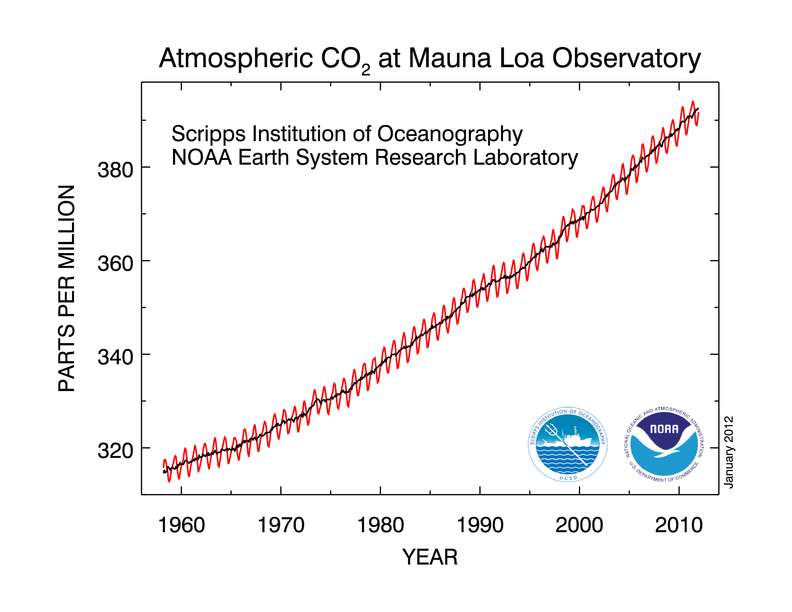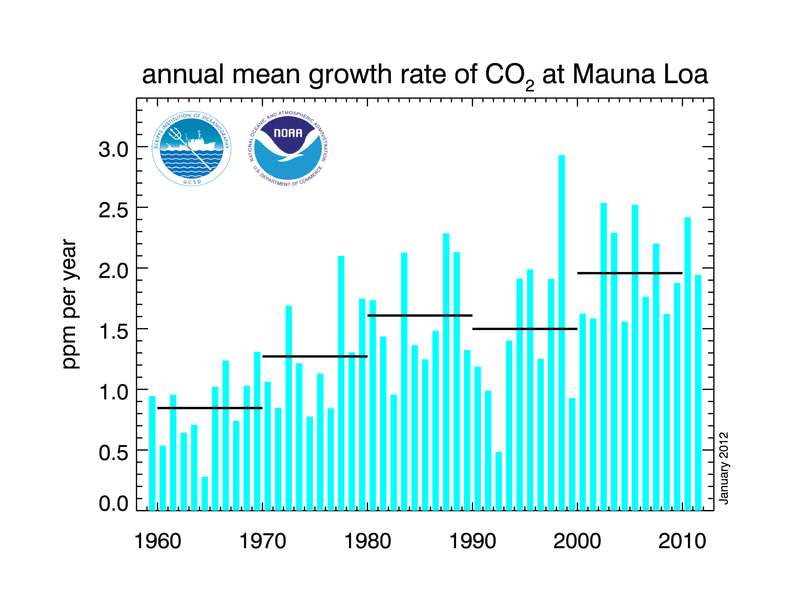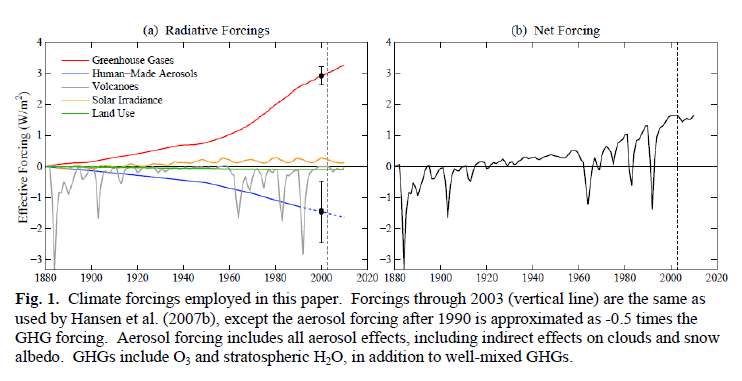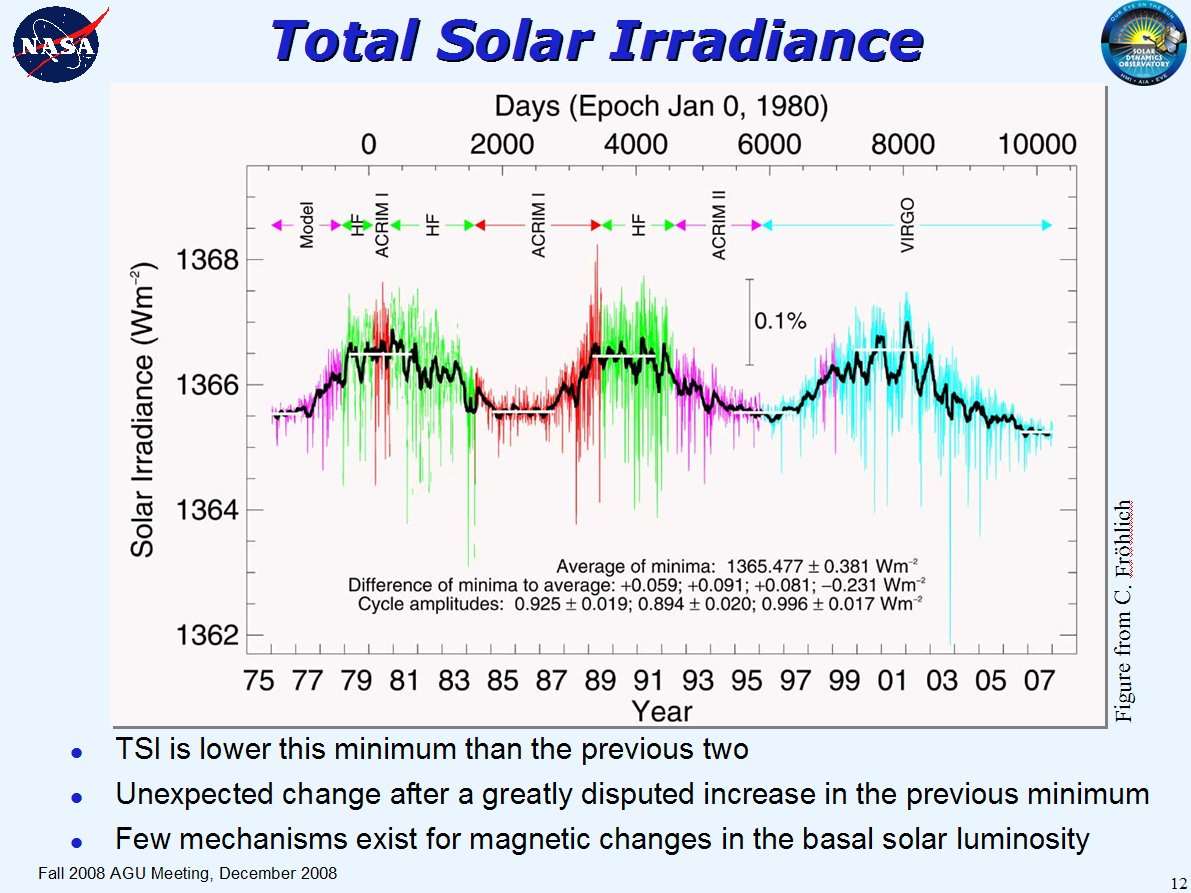NASA has produced a stunning 27 second video that maps earth's temperature for the past 130 years. The rapid warming for the past 30 years concentrated in the Arctic is shocking.
The rapid warming in the last 30 years is eye opening, but the video does not show why it has happened. To understand why we need to examine the factors that are affecting the earth's temperature. These factors are called "climate forcings" by climatologists.
A 2011 paper by Dr Jim Hansen and colleagues examined all the important climate forcings in detail. This paper clearly shows that the rapid warming over the past 30 years is caused by rapidly increasing levels of greenhouse gases in the atmosphere.
Many climate skeptics have suggested that changes in solar activity are naturally causing the increasing temperatures, but examination of Hansen's paper and NASA's data on solar activity show that is a failed hypothesis. Solar activity was low from 1880 to 1920 and increased up to about 1980, then began to decline slowly just as the global temperature shot up over the past 30 years. The actual changes in solar activity are a fraction of 1% and exert a small influence on the global temperatures over the past 130 years.
The largest natural contributor to global temperature variations over the past 130 years is volcanism. Aerosols form large volcanic eruptions reflected a significant amount of incoming solar radiation from 1880 to 1920, causing a prolonged cool period. Low solar activity also contributed to causing the cool period. Volcanic activity was low from 1920 to the early 1960s and solar activity rose, causing natural warming. The effects of increasing levels of greenhouse gases produced by human activities were canceled out by rising levels of solar radiation reflecting air pollution.
Large volcanic eruptions in the 1960s caused a brief cooling period.
Despite continued volcanism which would have caused natural cooling, the climate warmed in the 70s through the mid 80s as Europeans and Americans reduced sulfate emissions form coal fired power plants and other sources. The reduction in aerosols from human activities canceled out the effects of high levels of aerosols from volcanic activity. Greenhouse gas emissions increased rapidly, starting a period of rapid global warming.
NOAA's Mauna Loa Hawaii Atmospheric CO2 Levels

Rate of Increase of Mauna Loa CO2 Levels

Climate records show a high degree of variability at the annual level as El Nino and La Nina cause annual highs and lows. The El Nino of 1998, which was one of the strongest in history, caused a high spike. Over decades, the peaks and valleys caused by El Ninos and La Ninas average out showing a long term trend of rapid global warming since 1980.
The recent uptick in CO2 emissions from Asia hasn't affected the long-term trend significantly yet because smog levels have risen with greenhouse gas emissions. When China and India cut levels of aerosol pollution the full effect of rising Asian greenhouse gas emissions will be evident.

